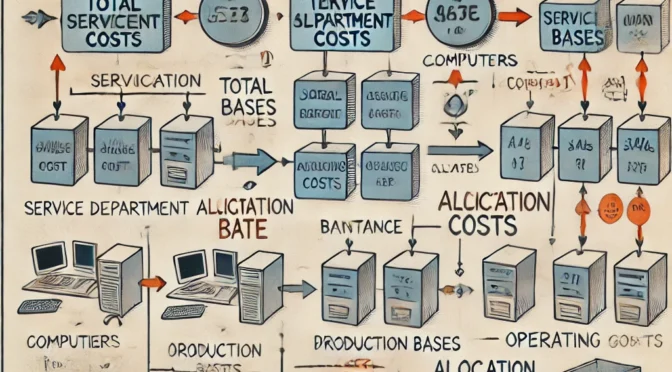Chapter 3 of “Quantitative Analysis for Management” delves into decision analysis, which is a systematic, quantitative, and visual approach to addressing and evaluating important choices faced by businesses. The focus is on how to make optimal decisions under varying degrees of uncertainty and risk, using tools such as decision trees, expected monetary value (EMV), and Bayesian analysis.
Key Concepts
Introduction to Decision Analysis:
Decision analysis involves making choices by applying structured techniques to evaluate different alternatives and their possible outcomes. The aim is to select the best alternative based on quantitative methods that consider risk and uncertainty.
The Six Steps in Decision Making:
- Clearly Define the Problem: Understand the decision to be made, including constraints and objectives.
- List the Possible Alternatives: Identify all possible courses of action.
- Identify the Possible Outcomes or States of Nature: Determine all possible results that might occur from each alternative.
- List the Payoffs (Profits or Costs): Develop a payoff table that shows the expected results for each combination of alternatives and states of nature.
- Select a Decision Theory Model: Choose a model that best fits the decision-making environment (certainty, uncertainty, or risk).
- Apply the Model and Make Your Decision: Use the model to evaluate each alternative and make the optimal choice.
Types of Decision-Making Environments:
- Decision Making Under Certainty: The decision-maker knows with certainty the outcome of each alternative. For instance, investing in a risk-free government bond where the interest rate is guaranteed.
- Decision Making Under Uncertainty: The decision-maker has no information about the likelihood of various outcomes. Several criteria can be applied under uncertainty, including:
- Optimistic (Maximax) Criterion: Selects the alternative with the highest possible payoff.
- Pessimistic (Maximin) Criterion: Selects the alternative with the best of the worst possible payoffs.
- Criterion of Realism (Hurwicz Criterion): A weighted average of the best and worst outcomes, with a coefficient of optimism.
- Equally Likely (Laplace Criterion): Assumes all outcomes are equally likely and selects the alternative with the highest average payoff.
- Minimax Regret Criterion: Focuses on minimizing the maximum regret (opportunity loss) for each alternative.
- Decision Making Under Risk: The decision-maker has some knowledge of the probabilities of various outcomes. In such cases, the Expected Monetary Value (EMV) and Expected Opportunity Loss (EOL) criteria are used:
- Expected Monetary Value (EMV): A weighted average of all possible outcomes for each alternative, using their respective probabilities: $$
EMV = \sum \text{(Payoff of each outcome} \times \text{Probability of each outcome)}
$$ - Expected Value of Perfect Information (EVPI): Represents the maximum amount a decision-maker should pay for perfect information about the future: $$
EVPI = \text{Expected value with perfect information} – \text{Best EMV without perfect information}
$$ - Expected Opportunity Loss (EOL): A measure of the expected amount of regret or loss from not choosing the optimal alternative. Minimizing EOL is another way to approach decision making under risk.
Decision Trees:
Decision trees are a visual representation of decision-making problems. They help to outline the possible alternatives, the potential outcomes, and the likelihoods of these outcomes, enabling a structured approach to complex decision-making problems.
- Components of Decision Trees:
- Decision Nodes (Squares): Points where a decision must be made.
- State-of-Nature Nodes (Circles): Points where uncertainty is resolved, and the actual outcome occurs.
- Branches: Represent the possible alternatives or outcomes.
- Steps in Analyzing Decision Trees:
- Define the Problem: Clearly state the decision problem.
- Structure the Decision Tree: Draw the tree with all possible decisions and outcomes.
- Assign Probabilities to the States of Nature: Estimate the likelihood of each possible outcome.
- Estimate Payoffs for Each Combination: Calculate the payoffs for each path in the tree.
- Calculate EMVs and Make Decisions: Work backward from the end of the tree, calculating the EMV for each decision node.
Bayesian Analysis:
Bayesian analysis revises the probability estimates for events based on new information or evidence. It is particularly useful when decision-makers receive new data that might change their view of the probabilities of various outcomes.
- Bayes’ Theorem: $$
P(A_i | B) = \frac{P(B | A_i)P(A_i)}{\sum_{j=1}^n P(B | A_j)P(A_j)}
$$ This theorem allows decision-makers to update their beliefs in the probabilities of various outcomes based on new evidence.
Utility Theory:
Utility theory incorporates a decision maker’s risk preferences into the decision-making process. It helps to choose among alternatives when the outcomes involve risk or uncertainty by assigning a utility value to each outcome.
- Measuring Utility: Utility functions represent the decision-maker’s preferences for different outcomes. They are often used when monetary values alone do not fully capture the decision-maker’s preferences.
- Constructing a Utility Curve: A utility curve shows how utility changes with different levels of wealth or outcomes, helping to determine whether a decision-maker is risk-averse, risk-neutral, or a risk seeker.
Example Problem and Solution:
Consider the Thompson Lumber Company example. John Thompson must decide whether to expand his business by constructing a large or small plant or doing nothing. Each alternative involves different payoffs depending on whether the market is favorable or unfavorable.
- Payoff Table:
| Alternative | Favorable Market ($) | Unfavorable Market ($) |
|---|---|---|
| Construct a Large Plant | 200,000 | -180,000 |
| Construct a Small Plant | 100,000 | -20,000 |
| Do Nothing | 0 | 0 |
- Expected Monetary Value (EMV):
For constructing a large plant:
$$
EMV_{\text{Large Plant}} = 0.5 \times 200,000 + 0.5 \times (-180,000) = 10,000
$$
For constructing a small plant:
$$
EMV_{\text{Small Plant}} = 0.5 \times 100,000 + 0.5 \times (-20,000) = 40,000
$$
The decision should be to construct a small plant as it has a higher EMV.
Conclusion:
Chapter 3 provides essential tools and methodologies for making well-informed decisions under different conditions of uncertainty and risk. By applying decision analysis techniques, such as decision trees, Bayesian analysis, and utility theory, managers can systematically evaluate their options and choose the best course of action based on quantitative and qualitative factors.









